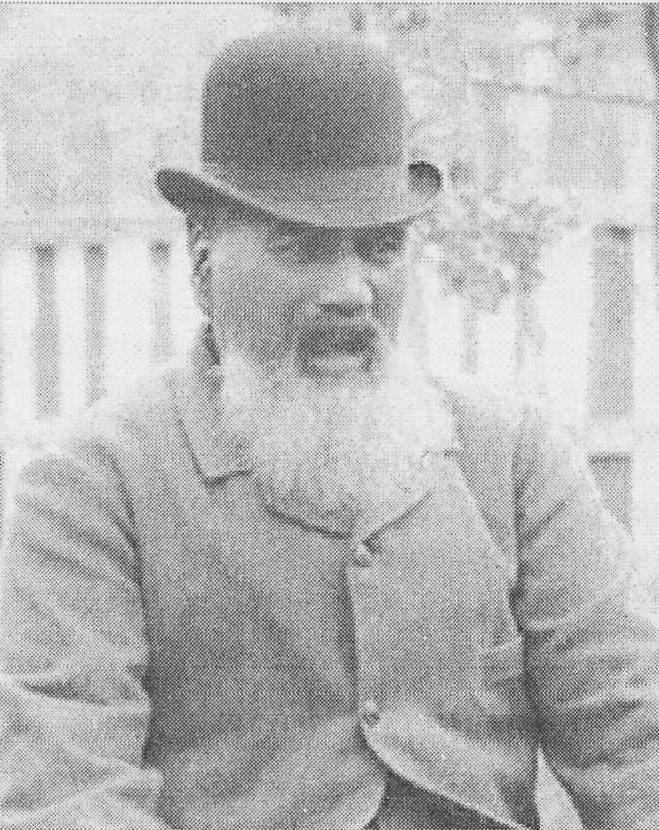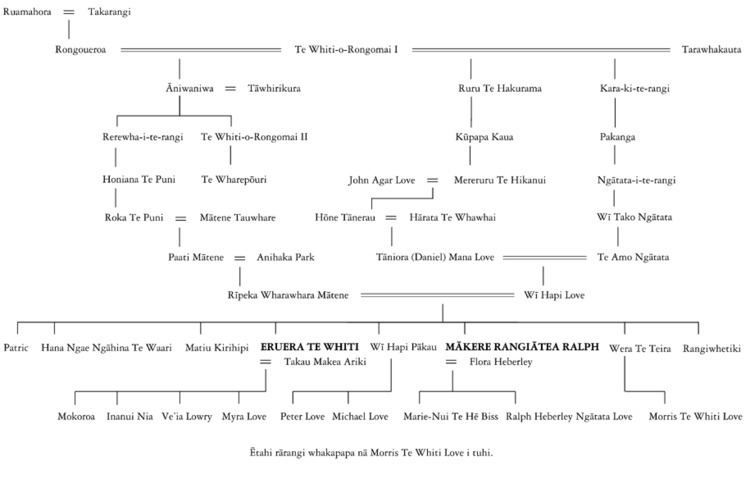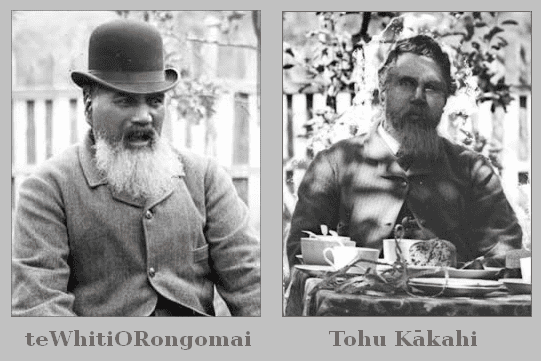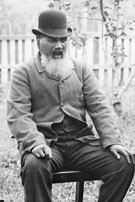Name Te o | ||
 | ||
Died November 18, 1907, Parihaka | ||
Waka Huia 2015 Rangikotuku Rukuwai, closest living descendant of Te Tohu and Te Whiti
Te Whiti o Rongomai III (c. 1830–18 November 1907) was a Māori spiritual leader and founder of the village of Parihaka, in New Zealand's Taranaki region.
Contents
- Waka Huia 2015 Rangikotuku Rukuwai closest living descendant of Te Tohu and Te Whiti
- Waka Huia PROMO Rangikotuku Rukuwai peacemaker
- Biography
- References

Waka Huia PROMO Rangikotuku Rukuwai, peacemaker
Biography

Te Whiti was born in Ngamotu, Taranaki, New Zealand in 1830, the son of Hone Kakahi of the Te Ati Awa tribe and Rangi Kauwau. Educated at a mission school, he later set up a flour mill in Warea.

In 1860 Te Whiti was responsible for saving the lives of the crew and passengers of the Lord Worsely which was wrecked on the Taranaki coast 80km south of New Plymouth. When Māori threatened the survivors on the beach he came to the rescue. He had a bullock killed and fed the survivors, sending a message to New Plymouth and arranged transport in carts to escort the survivors back to New Plymouth. This was the first time the government officials knew of the existence of Te Whiti. He was believed to be about 30 at the time. In 1867, the great Māori chief established a village at Parihaka. He wanted his people to regain their land, pride and self-respect after the confiscations in other parts of the North Island. His aim seems to have been to establish a new way for Māori to resist European attempts to take what was left of Taranaki.
With his close relative, Tohu Kakahi, Te Whiti led the people of Parihaka in their nonviolent resistance to the confiscation of Māori land by the New Zealand Government. He was the son of Tohukakahi, a minor chief of the Patukai hapu of the Ngati Tawhirikura branch, Te Ati Awa tribe, and of Rangiawau, daughter of Te Whetu. As a youngster, Te Whiti was well educated by Māori elders, who taught him about the traditions of his culture.

It also appears preacher Minarapa Te Rangihatuake taught Te Whiti scripture and to read and write. Te Whiti also became a pupil of Lutheran missionary Johannes Riemenschneider. While the Parihaka prophet turned his back on all acts of violence, he wasn't going to give up land without a fight. And so, passive resistance was born.
"Though some, in darkness of heart, seeing their land ravished, might wish to take arms and kill the aggressors, I say it must not be. Let not the Pakehas (sic) think to succeed by reason of their guns ... I want not war, but they do. The flashes of their guns have singed our eyelashes, and yet they say they do not want war ... The government come not hither to reason, but go to out-of-the-way places. They work secretly, but I speak in public so that all may hear, " Te Whiti told his people in March 1880.
By that time, Parihaka was a stronghold of Taranaki Māori opposition to the loss of tribal lands, which arose from the Land Wars and subsequent Crown legislation. The government passed the Suppression of Rebellion Act 1863 to punish Māori rebels who had fought against the government mainly in Taranaki and the Waikato. This defined Māori fighting against the government as rebels, who could be detained indefinitely, without trial. While Te Whiti and Tohu Kakahi were incarcerated, Māori ploughmen came from all over the country to assist them to re occupy their confiscated land and prevent the building of roads. Hundreds were arrested and their property confiscated. Reports of the Māori Ploughman's nonviolent struggle in the British media influenced the thinking of Mohandas K. Gandhi in South Africa.
